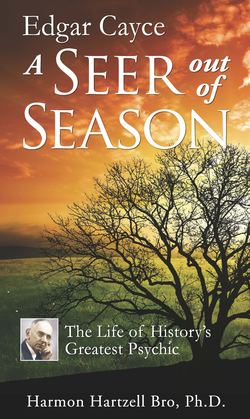Читать книгу Edgar Cayce A Seer Out of Season - Harmon Hartzell Bro - Страница 43
На сайте Литреса книга снята с продажи.
Investing the Mind
ОглавлениеIn the mental dimension of health, push also appeared. How an individual used the conscience or control systems of his or her life would be reflected in tissues. Self-indulgence under faulty controls would lead not only to flaccid muscles and poor circulation, but to organ impairment, depending on whether the indulgence were food, sex, alcohol, self-importance, or some other. Cayce pressed those whose life circles had collapsed inward to reach out to others in need, to take up new hobbies, to take on new friends, to read, to risk. Yet by contrast he warned those who allowed their mental controls and expectations to press them too hard that they would have their own health problems. They would find effects on tissues in congestion, inflammation, and other destructive consequences of too much adrenaline in the system. Correcting either excess required sorting ideals to discover what was really worthwhile and then changing what was not truly and wisely self-chosen.
The entranced Cayce did not use Freud’s concept of phallic character structure to represent personality trends toward exhibitionism or overly competitive striving against others. But such processes seemed well represented. For example, the first law of growth in the sequence of tasks that made up the spiritual manual developed anonymously by Cayce and his friends, called A Search for God,36 was not assertive self-improvement but cooperation. Such an emphasis was useful for those of his counselees who were perfectionists caught in their self-appointed striving, or so gripped by ambition as to eviscerate their humanness. Yet the other pole of behavior—not being sufficiently self-assertive—also caught Cayce’s attention because of the self-pity and self-damaging anger which it so often generated, as well as lonely lives. “Every tub must sit on its own bottom,” he urged, and added for some, “So live that you may look anyone in the eye and tell him to go to hell.” For those who had sold out to a symbiotic relationship with parent, spouse, or some other guarantor, Cayce stipulated a self-inventory to take full responsibility for one’s own life, lest illness mirror the protesting spirit of the person, through the rebellion of cancer cells, the irritation of an ulcer, or the throb of headaches.
Cayce did not offer an ascetic model as the optimal means for balancing push and relaxation in the body, though he did not condemn it for those who chose it wisely. Like the Buddha he offered a middle path, which brought together ecstasy and responsibility. Joy should be the spirit of a vital life at all levels, including the sexual as well as the intellectual when these were responsibly chosen. Bodies were viscera as truly as muscles and nerves.
A special trap to the mind, as one sought to give effective “push” to one’s life, lay in excessive fear and doubt. Over and over the readings pointed out that these normal processes could, if exaggerated, produce dismay, consternation, depression, and even disintegration of personhood. Fear and doubt were the primary sources (other than organ impairment) of mental illness, both in their corrosive action on self-respect and judgment, and in their debilitating effects on nerve circuits and body organs flooded with anxiety. Those caught in the twin mires of fear and doubt might well need to be rescued by others. Yet such persons must not be left in dependency but encouraged to formulate their own governing ideals and values and to begin acting on them (precisely as modern psychotherapy so often attempts). To tame fear and doubt, each person could well inquire about the difference between what Cayce called one’s “personality” and “individuality,” where the former stood for the self necessarily set before others to be seen, appreciated, and engaged in workaday affairs, while the latter stood for the true nature of the unique being. (The distinction was a solid match for Jung’s contrast of persona and self.)37 Both structures, in Cayce’s view, had to be brought into alignment, until the outer person expressed the patterns of the inner person and one could affirm self-worth without exaggerated fear or doubt. Cayce’s formula for both self-appraisal and the appraisal of others was “What ye measure in others will be inwardly measured in you.” While biblical in origin, it was congruent with the perspectives of psychotherapy.
